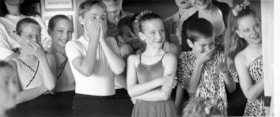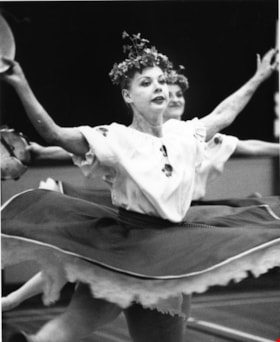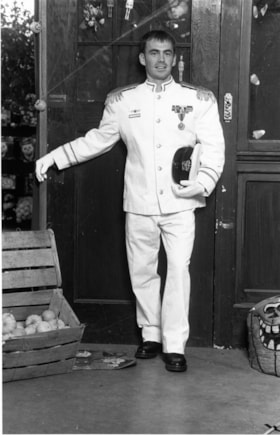More like 'dressing gown'
Narrow Results By
Decade
- 2020s 63
- 2010s
- 2000s 638
- 1990s
- 1980s 262
- 1970s 507
- 1960s 149
- 1950s 198
- 1940s 346
- 1930s 227
- 1920s 178
- 1910s 167
- 1900s 58
- 1890s 22
- 1880s 9
- 1870s 4
- 1860s 4
- 1850s 1
- 1840s 1
- 1830s 2
- 1820s 1
- 1810s 1
- 1800s 1
- 1790s 1
- 1780s 1
- 1770s 1
- 1760s 1
- 1750s 1
- 1740s 1
- 1730s 1
- 1720s 1
- 1710s 1
- 1700s 1
- 1690s 1
- 1680s 1
- 1670s 1
- 1660s 1
- 1650s 1
- 1640s 1
- 1630s 1
- 1620s 1
- 1610s 1
- 1600s 1
Jimmy Chow and colleague with costumes for "Seven Years in Tibet"
https://search.heritageburnaby.ca/link/museumdescription19236
- Repository
- Burnaby Village Museum
- Date
- [1996]
- Collection/Fonds
- Hipman "Jimmy" Chow and Donna Polos fonds
- Description Level
- Item
- Physical Description
- 1 photograph : col. ; 10 x 15 cm
- Scope and Content
- Photograph of property master Jimmy Chow and colleague with costumes for "Seven Years in Tibet". Jimmy and colleague are standing at a table and looking over paperwork. A rack of uniforms to be used as costumes in the film are hanging behind them. The text "Sólo cuenta..." is visible on the wall ab…
- Repository
- Burnaby Village Museum
- Collection/Fonds
- Hipman "Jimmy" Chow and Donna Polos fonds
- Description Level
- Item
- Physical Description
- 1 photograph : col. ; 10 x 15 cm
- Scope and Content
- Photograph of property master Jimmy Chow and colleague with costumes for "Seven Years in Tibet". Jimmy and colleague are standing at a table and looking over paperwork. A rack of uniforms to be used as costumes in the film are hanging behind them. The text "Sólo cuenta..." is visible on the wall above the rack. Jimmy Chow was the property master on this film which was directed by director Jean-Jacques Annaud, filmed on location in Argentina and Mount Waddington, British Columbia, released in 1997.
- Names
- Chow, Hipman "Jimmy"
- Accession Code
- BV022.21.81
- Access Restriction
- No restrictions
- Reproduction Restriction
- May be restricted by third party rights
- Date
- [1996]
- Media Type
- Photograph
- Scan Resolution
- 600
- Scan Date
- 2023-03-07
- Notes
- Title based on contents of photograph
- Hipman "Jimmy" Chow also used the name "James H. Chow" as a propety master in the film industry and was often credited by this name
Images
Jimmy Chow with saloon girl on the set of "Shanghai Noon"
https://search.heritageburnaby.ca/link/museumdescription19245
- Repository
- Burnaby Village Museum
- Date
- [1999]
- Collection/Fonds
- Hipman "Jimmy" Chow and Donna Polos fonds
- Description Level
- Item
- Physical Description
- 1 photograph : col. ; 15 x 10 cm
- Scope and Content
- Photograph of property master Jimmy Chow with Jay Cheng dressed as a saloon girl (Actor Jackie Chan's dresser and long time friend) on the set of the film "Shanghai Noon". Saloon costume was designed by Joseph Porro. The film was directed by Tom Dey, filmed on location in Alberta and released in 20…
- Repository
- Burnaby Village Museum
- Collection/Fonds
- Hipman "Jimmy" Chow and Donna Polos fonds
- Description Level
- Item
- Physical Description
- 1 photograph : col. ; 15 x 10 cm
- Scope and Content
- Photograph of property master Jimmy Chow with Jay Cheng dressed as a saloon girl (Actor Jackie Chan's dresser and long time friend) on the set of the film "Shanghai Noon". Saloon costume was designed by Joseph Porro. The film was directed by Tom Dey, filmed on location in Alberta and released in 2000.
- Names
- Chow, Hipman "Jimmy"
- Accession Code
- BV022.21.90
- Access Restriction
- No restrictions
- Reproduction Restriction
- May be restricted by third party rights
- Date
- [1999]
- Media Type
- Photograph
- Scan Resolution
- 600
- Scan Date
- 2023-03-07
- Notes
- Title based on contents of photograph
- Hipman "Jimmy" Chow also used the name "James H. Chow" as a propety master in the film industry and was often credited by this name
Images
Interview with Jiro Kamiya, 2015
https://search.heritageburnaby.ca/link/museumdescription4476
- Repository
- Burnaby Village Museum
- Date
- [2015]
- Collection/Fonds
- Burnaby Village Museum fonds
- Description Level
- Item
- Physical Description
- 1 sound recording (mp3) (01:11:02 min)
- Scope and Content
- Recording of a interview with Jiro Kamiya about the ofuro he built as an exhibit for display at Burnaby Village Museum, and his work in Canada generally. When he speaks in Japanese, his son Frank Kamiya does the English translation. Frank recalls how his father, a Japanese-trained carpenter, came …
- Repository
- Burnaby Village Museum
- Collection/Fonds
- Burnaby Village Museum fonds
- Series
- Museum Oral Histories series
- Subseries
- Museum research interviews subseries
- Description Level
- Item
- Physical Description
- 1 sound recording (mp3) (01:11:02 min)
- Material Details
- Interviewer: Lisa Codd Interviewees: Jiro Kamiya and his son Frank Kamiya Location of Interview: Nikkei Home, Burnaby Interview Date: [2015] Total Number of Tracks: 1 Total Length of all Tracks: 1:11:02
- Scope and Content
- Recording of a interview with Jiro Kamiya about the ofuro he built as an exhibit for display at Burnaby Village Museum, and his work in Canada generally. When he speaks in Japanese, his son Frank Kamiya does the English translation. Frank recalls how his father, a Japanese-trained carpenter, came to be involved in the project, which was donated to the Museum by the Japanese Canadian Citizens Association. An unidentified woman is also present and contributes to the discussion. 0:00 – 6:38: Frank Kamiya recalls the museum’s ofuro project, describing how his father became involved with it. He talks about the ofuro in Canada, speaking of their importance to Japanese Canadians but noting that they have been superseded by newer products. Frank also mentions that ofuros are now subject to modern building regulations. 6:38 – 20:30: Jiro Kamiya describes the construction of the ofuro. He explains the technique of water-proofing and talks about the different sizes of baths, discussing the differences in Japanese and Canadian styles and in the way water was supplied. 20:30 – 28:27: This portion of the recording pertains to Jiro Kamiya’s background as a carpenter in Shizuoka, Japan, in the family’s business, and how he came to immigrate to Canada. Frank talks about his father’s innovations and skills. He discusses the differences between Japanese and Canadian tools. Lisa Codd asks about the tools Jiro donated to the museum. 28:27 – 36:00: Frank talks about his father’s involvement in the building of the Museum’s ofuro. He notes that he himself drew up the plans and submitted them to City Hall. He asks about the ofuro’s plaque and the building’s condition. Lisa explains how the classification of buildings as replica or heritage determines how conservation choices are made. 36:00 – 45:47: Frank describes the purpose and use of the ofuro and the kind of accessories which should be included in the Museum’s display. The exact meaning of ‘ofuro’ is discussed with Jiro, as is bathing protocol for the larger and smaller kinds. 45:47 – 59:13: Jiro recalls New Year and other traditions and Lisa and Frank remark on the differences between the established infrastructures of Japan and those of rural Canada. Frank describes his father’s work in Canada. Jiro talks of being unable to join the carpenters union, but advancing in his profession through his ability and experience with Japanese techniques. 59:13 – 1:11:02: Jiro talks about the work that he did during internment during World War II and his choice to go to Winnipeg with his family. Frank relates how his father adapted to shipyard work, and Jiro tells anecdotes about his working years.
- History
- Interviewee: Jiro Kamiya (ne Tsuneki) was born on August 29, 1910 in Shizuoka Ken, Japan to parents Torakichi Tsuneki and Sono Ssuneki. In 1936, Jiro married Toneko Kamiya. The Tsuneki family were Master Carpenters for over 500 years and the family business, Torakichi Tsuneki Construction Co was the largest and best known construction company in Shizuoka Ken. Jiro also became a master carpenter working for his father's company. In 1933, Jiro immigrated to Canada and in 1936, he returned to Japan to marry. In 1937 he got work at the Hammond Cedar Mill leading a crew of six men and worked there for about three or four years. In 1942 along with over 21,000 Japanese Canadians, Jiro and his family were forcibly removed from the coastal area of British Columbia. Jiro and his family were relocated to Oak Bluff, Manitoba to work on the beet farms. JIro chose this location of internment so that he could keep his family together. While living in Manitoba, Jiro also found work as a carpenter. In 1948 when he was permitted to return to British Columbia, Jiro and his family relocated to Kamloops. In 1951, he began working as a carpenter for Matsumoto Shipyard in North Vancouver and between 1961 and 1974, he worked for Grimwood Construction. From 1975, he worked for Dawson Hall Construction until his retirement at the age of 68. Following his retirement he built a house for his nephew on Mayne Island and a summer house for himself which he completed in 1988. In 2001, Jiro and his wife, Toneko moved to Nikkei Home. While living at Nikkei Home, Jiro made chopsticks out of hardwood, creating over a thousand pairs up until he was 99 years old. Jiro passed away in 2015. Interviewer: Lisa Codd has worked in the museum sector since 2000 and between 2005 and 2019, she worked as the curator at the Burnaby Village Museum. In 2019, Lisa began her work as the City of Burnaby Heritage Planner.
- Creator
- Burnaby Village Museum
- Subjects
- Persons - Japanese Canadians
- Names
- Kamiya, Jiro
- Kamiya, Frank
- Accession Code
- BV019.13.1
- Access Restriction
- No restrictions
- Reproduction Restriction
- No known restrictions
- Date
- [2015]
- Media Type
- Sound Recording
- Notes
- Audio is only available to listen at the Burnaby Village Museum
Audio Tracks
Interview with Jiro Kamiya, 2015, [2015]
Interview with Jiro Kamiya, 2015, [2015]
https://search.heritageburnaby.ca/media/hpo/_Data/_BVM_Sound_Recordings/Oral_Histories/2019_0013_0001_001.mp3Interview with Toki Miyashita by Rod Fowler February 27, 1990 - Track 7
https://search.heritageburnaby.ca/link/oralhistory522
- Repository
- City of Burnaby Archives
- Date Range
- 1930-1990
- Length
- 00:13:56
- Summary
- This portion of the interview is about Toki Miyashita’s memories of the internment, separation of her father from the family to work on road camps, where she was born in Richmond at the Nelson Brothers “fishery”, confiscation of home in 1942, eventual Redress, and lingering feelings of fear and dis…
- Repository
- City of Burnaby Archives
- Summary
- This portion of the interview is about Toki Miyashita’s memories of the internment, separation of her father from the family to work on road camps, where she was born in Richmond at the Nelson Brothers “fishery”, confiscation of home in 1942, eventual Redress, and lingering feelings of fear and distrust in her family. She also talks about visiting Hiroshima on her trip to Japan in 1980
- Date Range
- 1930-1990
- Length
- 00:13:56
- Interviewer
- Fowler, Rod
- Interview Date
- February 27, 1990
- Scope and Content
- Recording is of an interview with Toki Miyashita, conducted by Rod Fowler. Toki Miyashita was one of eleven participants interviewed as part of the SFU/Burnaby Centennial Committee's oral history series titled, "Voices of Burnaby". The interview is about Toki Miyashita’s family’s internment during WWII, her awakening interest in Japanese culture after the war, her subsequent interest in teaching others about Japanese crafts and arts, and becoming a helpful intermediary between Burnaby and visitors from Japan. The interview explores her interest in the Ainu of Japan and their possible link to the aboriginals of BC, her impressions of the Ainu carver Nuburi Toko, and her involvement in the events surrounding the creation of the sculpture “Playground of the Gods” for Burnaby Mountain. The interview also contains interesting details about the art of Japanese flower-arranging. To view “Narrow By” terms for each track expand this description and see “Notes”.
- Biographical Notes
- Toki Miyashita was born in Richmond B.C., ca. 1935, at the Nelson Brothers “fishery”, a second generation Canadian descended from the Oikawa family who settled on Don and Lion Islands (Oikawa-shima). In 1942 the Japanese Canadians in BC were forcibly moved from the coast and their belongings confiscated. Toki Miyashita, her parents, two brothers, and grandparents were first taken to Hastings Park where her father was separated from the family to work in road camps, and the rest of the family were interned in New Denver. Her resourceful grandmother moved the family to land outside the internment camp, growing a large garden from seeds brought with her. In 1946 the family moved to Kamloops and in 1958, after finishing high school, Toki Miyashita moved to Montreal to be with relatives and a small Japanese community. At this time she became interested in Japanese culture and took a Japanese language course at age 22. She learned about Japanese flower-arranging (Ikebana), paper folding (Origami), silk doll making (from a Russian Jew), and how to wear a kimono. She began demonstrating these arts in schools and to other groups, which she continued doing when she, her husband and two young children moved to Burnaby in 1969. Toki Miyashita has been called an unpaid “ambassador” of Japanese culture to the Lower Mainland. She has acted as liaison between Burnaby and her sister city Kushiro in Japan, which involved her in the creation of the Ainu sculpture “Playground of the Gods” on Burnaby Mountain for Burnaby’s Centennial. Toki Miyashita is a recognized Master in Ikebana Sogetsu, a school of flower-arranging, and has served on the board of the Vancouver Ikebana Association. She also served on Burnaby’s Family Court in the 1980s.
- Total Tracks
- 11
- Total Length
- 01:34:10
- Interviewee Name
- Miyashita, Toki
- Interviewer Bio
- Rod Fowler returned to university as a mature student in the 1980s after working about twenty years in the field of economics and computerization in business in England, Europe and Western Canada. He graduated with a BA from SFU in both History and Sociology in 1987, his MA degree in Geography in 1989, and his PhD in Cultural Geography at SFU. He taught courses in Geography, Sociology, History and Canadian Studies at several Lower Mainland colleges, before becoming a full time member of the Geography Department at Kwantlen University College.
- Collection/Fonds
- SFU/Burnaby Centennial Committee fonds
- Transcript Available
- Transcript available
- Media Type
- Sound Recording
- Web Notes
- Interviews were digitized in 2015 allowing them to be accessible on Heritage Burnaby. The digitization project was initiated by the Community Heritage Commission with support from City of Burnaby Council.
Audio Tracks
Track seven of interview with Toki Miyashita
Track seven of interview with Toki Miyashita
https://search.heritageburnaby.ca/media/hpo/_Data/_Archives_Oral_Histories/_Unrestricted/MSS187-017/MSS187-017_Track_7.mp3Children dressed up for Halloween
https://search.heritageburnaby.ca/link/archivedescription98376
- Repository
- City of Burnaby Archives
- Date
- [1999]
- Collection/Fonds
- Burnaby NewsLeader photograph collection
- Description Level
- Item
- Physical Description
- 1 photograph (tiff) : col.
- Scope and Content
- Photograph of two unidentified children dressed in Halloween costumes and posing with candy and a jack-o-lantern.
- Repository
- City of Burnaby Archives
- Date
- [1999]
- Collection/Fonds
- Burnaby NewsLeader photograph collection
- Physical Description
- 1 photograph (tiff) : col.
- Description Level
- Item
- Record No.
- 535-3386
- Access Restriction
- No restrictions
- Reproduction Restriction
- No restrictions
- Accession Number
- 2018-12
- Scope and Content
- Photograph of two unidentified children dressed in Halloween costumes and posing with candy and a jack-o-lantern.
- Media Type
- Photograph
- Notes
- Title based on contents of photograph
- Collected by editorial for use in an October 1999 issue of the Burnaby NewsLeader
Images
Interview with Prem Kaur Gill, Santokh Singh Gill and Mohinder Kaur Gill
https://search.heritageburnaby.ca/link/museumdescription19347
- Repository
- Burnaby Village Museum
- Date
- [1957-2022] (interview content), interviewed 11 Nov. 2022
- Collection/Fonds
- Burnaby Village Museum fonds
- Description Level
- Item
- Physical Description
- 1 sound recording (m4a) (118 min., 39 sec.) + 1 sound recording (mp3) (115 min., 20 sec.)
- Scope and Content
- Item consists of an oral history interview with Santokh "Gurmail" Singh Gill and Mohinder Kaur Gill and their daughter, Prem Kaur Gill conducted by interviewers, Anushay Malik and Rajdeep. The interview is conducted in English, Punjabi, Hindi and Urdu. The three members of the Gill family share the…
- Repository
- Burnaby Village Museum
- Collection/Fonds
- Burnaby Village Museum fonds
- Series
- Museum Oral Histories series
- Description Level
- Item
- Physical Description
- 1 sound recording (m4a) (118 min., 39 sec.) + 1 sound recording (mp3) (115 min., 20 sec.)
- Material Details
- Interviewers: Anushay Malik, Rajdeep Interviewees: Prem Kaur Gill, Santokh "Gurmail" Singh Gill and Mohinder Kaur Gill Location of Interview: Gill family residence on Warwick Avenue in Burnaby Interview Date: November 11, 2022 Total Number of tracks: 1 Total Length of all Tracks: (1:58:39) Digital master recording (m4a) was converted to mp3 for access on Heritage Burnaby
- Scope and Content
- Item consists of an oral history interview with Santokh "Gurmail" Singh Gill and Mohinder Kaur Gill and their daughter, Prem Kaur Gill conducted by interviewers, Anushay Malik and Rajdeep. The interview is conducted in English, Punjabi, Hindi and Urdu. The three members of the Gill family share their ancestral background, their personal experiences immigrating to Canada, living in Burnaby and working in British Columbia as South Asian immigrants. 00:00 – 27:34 Santokh “Gurmail” Singh Gill and Mohinder Kaur Gill share their migration stories and experiences living and working in British Columbia as South Asian immigrants and their eldest child, Prem Kaur Gill shares her own experiences as a child of South Asian immigrants and growing up in British Columbia as a South Asian Canadian. Gurmail Singh Gill was born in the District of Jalandhar and Mohinder Kaur Gill was born in Hoshiapur of the Indian state of Punjab. Gurmail describes how he moved from India to England with his family in 1957, immigrated to Canada from England in 1966, married his wife Mohinder in England in 1968 and brought his family (parents and two siblings) to Canada from England in 1970 and other relatives including his wife’s family in the 1970s and 1980s. Mohinder and Gurmail Gill recollect their arranged marriage in England in 1968, their immigration process and explain how they arrived in Burnaby residing with a cousin at 4649 Georgia Street until they were able to purchase their own home after a few years. Gurmail shares names and connections to the relatives that came to British Columbia before him. Gurmail and Mohinder tell how they lived in the basement of the house and rented out the upper floor to save money. The couple recall what they brought with them when they immigrated to Canada and Mohinder Kaur Gill tells of how before leaving India, she and her mother made a special rajai for her to take with her. Mohinder describes the process of making a rajai (a quilted blanket that was made by hand). Gurmail and Mohinder Gill talk about the challenges that they’ve experienced as new immigrants including not being fluent in English, the cold weather and not having very many family or friends nearby to provide support. They attended the Gurdwara on Ross Street or Akali Singh Sikh Society Gurdwara on Skeena in Vancouver. They explain how there was limited access to grocery stores that supplied Punjabi and Indian spices and other cooking supplies. They talk about how they used a food mill and mortar and pestle to grind their own spices and flour and how Mohinder often made traditional sweets like barfi and laddo and pakoras using pea flour when they couldn’t get Besan flour. 27:35 – 36:11 Gurmail provides more details on his family’s immigration story, including names of relatives, how his six siblings and parents all immigrated to British Columbia in 1970 and how in the early 1970s and mid 1980’s Gurmail and his family sponsored approximately 70 friends and relations from India (including Mohinder’s family) to immigrate to Canada. When Mohinder’s family arrived they lived with them in their house until they were able to purchase property next door and build their own home. Children in the families all attended elementary and high school in Burnaby which now amounts to three generations. 36:12 – 59:28 Gurmail and Mohinder Gill talk about their experiences of racial discrimination. Gurmail recalls members of the South Asian community, Dr. Hari Prakash Sharma, Harinder Mahil and Charan Gill starting the British Columbia Organization to Fight Racism. Gurmail tells of how he got involved contributing some of his union dues as a member of CAIMAW (Canadian Association of Industrial Mechanical and Allied Workers Union- Local 15) and as a friend of Charan Gill and Raj Chouhan of the Canadian Farm Workers Union. Gurmail Gill explains how he was a founding member of CAIMAW and treasurer until the union merged with the Canadian Auto Workers Union (in 1991). Mohinder and Gurmail tell of how people from the South Asian community were discouraged from wearing Punjabi dresses or head coverings for fear of being yelled at with racial slurs and how it was often scary to go outside. Many from their community often avoided attending the Akali Singh Gurdwara since a head covering was required and people were afraid of being a target. Gurmail provides details about his work with A1 Steel, how different unions were formed pertaining to various skillsets and jobs per company and how he became a member of CAIMAW Local 15 (foundry workers). Mohinder recollects her experiences as a mother, the daily tasks involved and friends that she made who’d also emigrated from Punjab. Mohinder describes how she designed and sewed many Punjabi dresses using her electric sewing machine and how she learned English by attending adult classes at a church on Commercial Drive. Mohinder and her mother attended the classes for two hours per day for six years at a cost of twelve dollars for ten weeks. Once Mohinder could speak a little English, she started working and was able to practice more. 59:29 – 1:06:08 Mohinder, Gurmail and Prem talk about some of their favourite traditional foods including corn roti and spinach curry and how they grow many of their own vegetables including peppers, eggplant, saag (spinach), onions, garlic, cilantro, zucchini, squash and fenugreek. Mohinder reflects on how access to Punjabi clothing and fabric stores in Vancouver has changed and that ready made food is now more available. Traditional foods were previously made from scratch with women gathering together and cooking for hours and now it’s gotten easier but more expensive and less of a community feel. 1:06:09- 1:55:20 Mohinder and Gurmail Gill discuss and share their perspectives and experiences on raising a family in the past versus today. Gurmail imparts that all of his siblings became educated and secured professional careers while he continued to work in the trades. Prem Kaur Gill shares her own experiences growing up and attending school in Burnaby. Gurmail and Mohinder Gill recall the type of suitcase that they brought with them when they immigrated and how they recently they got rid of it. Gurmail and the group reflect and discuss the confusion with racial identity terms that have been used in this country. They comment that South Asians were referred to as “Hindu” and “East Indian” and Indigenous peoples were referred to as “Indian” and the controversy and racism behind some of these terms. The group discusses the impact of the caste system and other discriminatory experiences and compare their experiences of living in England to living in Canada. Prem comments on how it’s just recently that South Asian customs, celebrations and practices have been recognized and celebrated here in Canada, like Diwali and yoga. They comment on how much of the language, culture and customs have been retained in Surrey where many can still communicate in Punjabi and don’t need to be fluent in English. The group discusses how many South Asians immigrants first lived and worked in Vancouver but with rising property prices many moved to Surrey expanding and establishing a much larger South Asian community with resources. The group discusses and compares the differing travel routes that many of them and their relatives took when immigrating and travelling between India and Canada. The group talks about Rajdeep’s ancestral village in India which is near the Gill village of Firozpur. Gurmail explains the origins and details behind his family name that was changed from “Shergill” to “Gill” and the name “Santokh” from his maternal side.
- History
- Interviewees' biographies: Santokh "Gurmail" Singh Gill was born in the District of Jalandhar in Punjab, India. Gurmail moved to England with his family in 1957 and immigrated to British Columbia in 1966. Gurmail married his wife, Mohinder Kaur Gill in England in 1968 and she immigrated to British Columbia from England soon after. Gurmail first lived with a cousin in Burnaby before purchasing a home of his own in Burnaby where he raised his family. Gurmail worked in the steel industry and was a member and treasurer of the CAIMAW before the union merged with the Canadian Auto Workers Union. Mohinder Kaur Gill was born in the Hoshiapur in Punjab, India. She married her husband Santokh "Gurmail" Singh Gill in England in 1968 and immigrated to Burnaby, British Columbia to join her husband. Mohinder and Gurmail Gill have four children, all born in Burnaby. Prem Kaur Gill was born in Burnaby in 1969 and is the eldest child of Santokh "Gurmail" Singh Gill and Mohinder Kaur Gill. Prem grew up and attended school in Burnaby. Interviewers' biographies: Anushay Malik is labor historian with a geographical focus on South Asia. Anushay studied at the University of London and was a research fellow at the International Institute of Social History in Amsterdam, Netherlands. In 2014, Anushay moved back to her native Pakistan and joined Lahore University of Management Services as an Assistant Professor. In 2023, Anushay is a visiting scholar at Simon Fraser University and lives in Burnaby with her family. Anushay was a co-curator of the Burnaby Village Museum exhibit “Truths Not Often Told: Being South Asian in Burnaby”. Rajdeep was born and raised in the Lower Mainland and is of Punjabi (South Asian) descent. She has an Associate of Arts degree in Asian Studies from Kwantlen Polytechnic University, a Bachelor of Arts (Hons.) in Anthropology from the University of British Columbia. She is a student in the Restoration of Natural Systems program at the University of Victoria. Rajdeep works at Simon Fraser University as a Program Assistant and as a researcher with the City of Burnaby. At Burnaby Village Museum, Rajdeep contributed to the exhibit “Truths Not Often Told: Being South Asian in Burnaby”.
- Creator
- Burnaby Village Museum
- Subjects
- Clothing
- Foods
- Indigenous peoples
- Buildings - Religious - Temples
- Food Processing Tools and Equipment
- Persons - South Asian Canadians
- Social Issues
- Social Issues - Racism
- Migration
- Occupations
- Organizations - Unions
- Responsibility
- Rajdeep
- Malik, Anushay
- Accession Code
- BV022.29.2
- Access Restriction
- No restrictions
- Reproduction Restriction
- No known restrictions
- Date
- [1957-2022] (interview content), interviewed 11 Nov. 2022
- Media Type
- Sound Recording
- Notes
- Title based on contents of item
- Transcript available upon request - contact Burnaby Village Museum
- Indian Family System Reference notes: Baba = informal way to say grandfather; old man Bibi = informal way to say grandmother; old woman Dada= paternal grandfather Dadi= paternal grandmother Dadke= paternal family members; paternal side (Various spellings might exist for the following terms) Thaiyya= father’s elder brother (uncle) Thaiyyi= father’s elder brother’s wife (aunt) Chacha= father’s younger brother (uncle) Chachi= father’s younger brother’s wife (aunt) Bua= father’s sister (older or younger) (aunt) Phuphar= father’s sister’s husband (uncle) Nana= maternal grandfather Nani= maternal grandmother Nanke/nanka= maternal family members; maternal side Mama= mom’s brother (older or younger) (uncle) Mami= mom’s brother’s wife (aunt) Maasi= mom’s sister (older or younger) (aunt) Maasard= mom’s sister’s husband (uncle)
Audio Tracks
Interview with Prem Kaur Gill, Santokh Singh Gill and Mohinder Kaur Gill, [1957-2022] (interview content), interviewed 11 Nov. 2022
Interview with Prem Kaur Gill, Santokh Singh Gill and Mohinder Kaur Gill, [1957-2022] (interview content), interviewed 11 Nov. 2022
https://search.heritageburnaby.ca/media/hpo/_Data/_BVM_Sound_Recordings/Oral_Histories/2022_0029_0002_002.mp3Interview with Surjeet Kaur Parmar
https://search.heritageburnaby.ca/link/museumdescription19350
- Repository
- Burnaby Village Museum
- Date
- [1905-2022] (interview content), interviewed 6 Dec. 2022
- Collection/Fonds
- Burnaby Village Museum fonds
- Description Level
- Item
- Physical Description
- 2 sound recordings (wav) (75 min., 32 sec.) + 1 sound recording (mp3) (75 min., 32 sec.)
- Scope and Content
- Item consists of a recording of an oral history interview with Surjeet Kaur Parmar conducted by interviewer Anushay Malik. The interview is conducted in Urdu, Hindi and Punjabi. During the interview Surjeet Kaur Parmar provides information on; her ancestral background, family relations in India and…
- Repository
- Burnaby Village Museum
- Collection/Fonds
- Burnaby Village Museum fonds
- Series
- Museum Oral Histories series
- Description Level
- Item
- Physical Description
- 2 sound recordings (wav) (75 min., 32 sec.) + 1 sound recording (mp3) (75 min., 32 sec.)
- Material Details
- Interviewer: Anushay Malik Interviewee: Surjeet Kaur Parmar Language of Interview: Urdu, Hindi and Punjabi Location of Interview: home of Surjeet Kaur Parmar in Burnaby Interview Date: December 6, 2022 Total Number of tracks: 2 Total Length of tracks: (1:15:32) Digital master recordings (wav) were edited into one recording and converted to mp3 for access on Heritage Burnaby
- Scope and Content
- Item consists of a recording of an oral history interview with Surjeet Kaur Parmar conducted by interviewer Anushay Malik. The interview is conducted in Urdu, Hindi and Punjabi. During the interview Surjeet Kaur Parmar provides information on; her ancestral background, family relations in India and Canada, her personal experiences and her ancestors’ stories as South Asian immigrants, reflections on and personal experiences of racial discrimination as a South Asian immigrant, her places of residence, her employment background, her cultural practices and traditions including food, clothing and craft. The interview begins with introductions from interviewer Anushay Mailik. Surjeet Kaur Parmar imparts her own family’s migration story beginning with her very first elders that immigrated to Canada from India. A relative (unnamed) immigrated to Canada first and a few years later (around 1905) returned to India and brought back three cousins that included; Ginaya Singh (Ghania Singh Manhas) and Doman Singh . Mayo Singh (Ghania Singh’s younger brother) came in 1906 on his own to join them. Surjeet’s grandfather (Shair/Sher Singh Manhas) also wanted to immigrate at this time, but he was too young and weak to manage such a long trip. Surjeet conveys that while living in British Columbia, Mayo and Ginaya Singh worked together at saw mills. With their knowledge and understanding of mill work they ended up owning and operating a mill in Paldi near Duncan on Vancouver Island. At this time, most of the men from Surjeet’s family region in Punjab were abroad and with no men living at home. Mayo Singh’s father (Bhulla Singh) looked after her father (Lashman Singh Manhas) and paternal uncle (Kashmir Singh Manhas) back in Punjab. When Mayo’s father died, Mayo Singh adopted her paternal uncle (Kashmir Singh) and brought him to Canada in 1926. Surjeet describes her ancestors’ immigration journey from India to Canada. They all travelled by ship and if someone ran out of money en route, they could work on the ship. Surjeet explains that both Mayo and Ginaya Singh are Surjeet’s grandfather’s first cousins and her father’s second cousins. Surjeet recollects her grandfather (Shair/Sher Singh Manhas) saying “now that you’ve arrived there, take one cousin from each side with you”. Surjeet explains that the cousins were all from the same village in Punjab and her great grandfather wanted someone to go abroad, so he sent a few and had them bring more as the years went on. Surjeet says that she’s uncertain as to why they chose Canada rather than America but thinks that they did some form of research and determined that it was a good place to come to. Surjeet admits that she doesn’t know the name of her paternal grandfather or other elders since she never met them. Surjeet shares that it was a traditional practice to mark pots and pans with family names and imparts that she discovered her father’s name “Lashman Singh” written on the bottom of a glass. Surjeet expresses that she’s marked her own pots and pans with her name to identify which ones are hers when she gets together with family or does catering. Surjeet refers to a kohl bottle that she has and how she’d like to offer it to the museum. She explains how the kohl bottle is no longer in use but was used by her mother (Budhan Kaur Manhas) and daughter and her grandchildren. Surjeet describes a blanket that she made called a “phulkari”, now on display in a small museum in Coquitlam, a wedding shawl, that her daughter now owns and a silk sari with embroidery. Surjeet and Anushay discuss the possibility of donating the kohl bottle and the sari to the museum. Surjeet explains how the kohl is used and how her mother used to make kohl. She describes how you rub the kohl with your hands, put cardamom in it, one or two other ingredients and fill the kohl bottle up with water. Surjeet says that she used kohl as eyeliner when living in India. The interviewer asks Surjeet more about Ginaya Singh. Surjeet conveys that Ginaya Singh ended up leaving the mill on Vancouver Island and moved to Vancouver. After Ginaya Singh died from a heart attack (in 1953) his family moved from Vancouver to Burnaby. Surjeet recalls that following the death of Ginaya Singh’s youngest son, her family didn’t celebrate “Lohri” (a winter festival celebrating newborns and newly married people) for three years. She shares that she was very young at this time but remembers there being beautiful photographs of young children all dressed up and displayed in her family home. She expresses that dressing up for photos has changed over time and adds that suits didn’t really come into fashion until after the 1970s or 1980s. Surjeet conveys that her uncle named Kashmira Singh first worked at the mill in Paldi near Duncan then moved to Vancouver and opened up his own mill in North Vancouver. Surjeet’s father, Lashman Singh Manhas arrived in 1953. Surjeet expresses that Kapoor Singh was educated and worked as a manager at the mill on Vancouver Island. Surjeet recollects meeting Mayo Singh, his wife and eldest son in 1952 when they travelled to India for a cousin’s wedding. Surjeet remembers that Mayo Singh’s family had a very large house in India. She describes the house as a very opulent two story house with indoor plumbing for a bathtub, a kitchen with a woodstove, coloured mirrors, bejeweled curtains, a motor room to park cars, a buffalo and more. Surjeet refers to Nand Singh, a younger brother of Mayo Singh, who travelled from India to San Franciso and spent a year wandering around before deciding to return to India. She describes him as living in Bombay with his wife Vishan Kaur and having a transport business. Nand had two kids that came to Canada. Surjeet recollects the tragic death of Ganda Singh (Ginaya Singh) who died of a heart attack on someone’s doorstep, they thought that he was drunk so didn’t open the door. Surjeet conveys that Mayo Singh’s wife, Mission Kaur (Saradani Bishan Kaur) died while visiting India (in 1952) and that some of Mayo’s sons were married in Canada and one in India. Surjeet expresses that it was hard for Mayo’s sons to have one of their parents die in India and one die in Canada (Mayo Singh died in B.C. in 1955). Surjeet describes the hospital that Mayo built in the village of Paldi. She mentions that there were festivals and functions that took place there, there were many nurses and doctors. She recalls there being a school where their land was. She recalls that if they got headaches they were treated with medicine and that it didn’t cost much, only a six pence. Surjeet talks about her arranged marriage to Kalwant Singh "Nadeem" Parmar. Surjeet explains that her father and brother immigrated to British Columbia first (1953) and after a few months they brought Surjeet and her mother (Budhan Kaur Manhas). She recollects that when she was in Grade 10 and around 17 years of age, her family made plans to travel to India to attend a family wedding. During this time, her father suggested that it would be a good opportunity to take Surjeet with them to find her a husband in India to marry. After meeting and marrying Nadeem Parmar in India, Surjeet and Nadeem moved to England. Surjeet recollects that in order to immigrate to Canada, each family member had to pass a medical exam and how difficult it was. Her two sisters, mother and brother all had to take the test in Delhi. Surjeet recalls living in England with Nadeem. While living in England, Nadeem worked during the day and studied engineering at college in the evening. Surjeet expresses that she liked living in England and was sad to leave. While living there, they enjoyed a close knit Punjabi community and they all lived in the same area. Surjeet states later in her interview that living in Canada was different from living in England. In England, family and friends lived closer together whereas in Canada places were further apart. Surjeet says that while living in England she could walk to do her shopping. While living in England, after her children were a bit older, she worked as a seamstress in a shirt factory for a few years before coming to Canada. Surjeet imparts that her father (Lashman Singh Manhas) died of a heart attack in 1970 and her mother (Budhan Kaur Manhas) died in 1998. Her father and her family first lived in North Vancouver and then her parents bought a house on Eton Street in Burnaby, near the Ocean. After her father died, her brother and mother bought a house and moved to the Capitol Hill neighbourhood in Burnaby. In 1973, Surjeet, Nadeem and their two children immigrated to Canada and moved in with her brother and mother. Surjeet includes that her paternal aunt (Koshali Kaur Manhas) and cousins also moved to Burnaby and that her aunt and some of her cousins were sponsored by her son who came earlier. Surjeet recalls that after arriving in Canada she got work sewing in a factory located on Water Street in Gastown. Surjeet recollects travelling to her job by bus. Surjeet shares that she brought saris and quilted blankets “rijai”, not household items, in her suitcase when she came to Canada from England. Surjeet explains that the “rijai” (quilted blankets) were made from cotton from her home village in India. The blankets were made by women and then brought back to her to quilt on her sewing machine. Surjeet recalls that when she returned to Canada (in 1973 with her husband and children) they first lived with her mother and brother on Capitol Hill in Burnaby before moving to a house on Fell Avenue and then to their current home in 1982. In 1981, she worked at “Canadian Window Covering” factory making window coverings. The factory was located in the Brentwood area of Burnaby. Surjeet recalls how the factory became unionized and of how she left the factory and found union work at the Labatt’s brewery (Winery and Distillery Workers Local 300). Surjeet describes the work that she did while working at Labatt’s brewery which was located next to the Royal Columbian Hospital in Burnaby. Around 1995, when the Labatt’s factory closed down in Burnaby, she got union work as a bottle sorter for BDL Brewers Distributor Limited, where bottles were gathered for distribution at Braid Station. Surjeet left this job in 2000. Surjeet talks about traditional foods like bindi, sabji, aam and karela and where she’s shopped to find traditional ingredients for South Asian cuisine. She recollects how at first she could only find traditional ingredients at stores in Gastown, Chinatown and on Main Street in Vancouver but now they are more readily available at major grocery stores. Surjeet expresses that traditional spices and dry goods have been hard to find, apart from stores like, Famous Foods and Patels when it was located on Commercial Drive. Surjeet talks about using ingredients such as green pea flour and Besan flour to make pakoras and kahdri. Surjeet states that many immigrants didn’t wear their traditional clothing until she came later. She expresses that many South Asian immigrants didn’t wear their clothes “because there were no rights, we had to try to become like them”. Surjeet conveys that even though some were able to purchase property (she provides an example of family members in Duncan who faced discrimination by the owner/seller of a piece of property they were purchasing) that they had very little rights and they were all living in fear. She expresses that she herself didn’t experience this but in the beginning when people settled here (in B.C.) that it was very difficult. Surjeet says that when she goes to the Gurdwara and to work, she wears a sari and conveys that while working at the factory, she was encouraged to wear a sari, it was accepted then. She brought printed saris to work and her co workers said that they’d wear them to parties. Surjeet reflects on her own experiences of racism and discrimination and expresses that her generation “has learned how to stand up in front, then they got scared of saying anything”. “The people who came here first were afraid because they were alone, they had to settle down here and make a home from scratch, but the ones who came after had everything already built and made”. She explains how they helped one another when they came (to British Columbia). She describes how the Gurdwara was located on 2nd Street and all of the ships went there (new immigrants?), people would gather, get water, help one another and there would be a place for all people. Surjeet shares a personal experience of helping members of her husband’s family to immigrate to Canada. She tells of the complications of some being left behind in India and that some came to Canada as refugees that she and her husband sponsored. Surjeet expresses their struggles with raising a family, working and trying to pay for their own house while also trying to assist and support family members. Surjeet describes in detail how her husband Nadeem went back to India after his mother died to help his father, sister and her family immigrate. She explains that the immigration process took about four years and his father had to apply as a refugee. Nadeem’s sister came with her children but had to return to India so Surjeet and her family had to look after Nadeem’s sister’s child/children. Surjeet expresses that during this time she continued to work at Canadian Window Coverings, working an afternoon shift and sometimes taking her son with her. She expresses that this as a very hectic time, working the whole day, making food for everyone, grocery shopping, looking after a her sister in law’s younger child at night and getting no rest. Surjeet describes the time when she was working and her children were attending the local school. She expresses the challenges of working long days and often arriving home after her children. She recollects a time when there was a snow storm and how she was worried about her children making it home and being alone while she was at work, there were no cell phones in those days but they had phone numbers of her brother and sister. Surjeet tells of how they tried to help the rest of the Nadeem’s family immigrate including his brother who was a soccer player in India. They were able to buy a house for the whole family to live but expresses after several months Nadeem’s brother decided to stay in India. Surjeet expresses the complications and frustrations of trying to bring all family members to Canada.
- History
- Interviewee biography: Surjeet Kaur Parmar was born in Punjab, India in 1942 to parents Lashman Singh Manhas (1913-1970) and Budhan Kaur Manhas (1906-1998). Surjeet’s ancestors, Ghania Singh Manhas, Doman Singh and Mayo Singh immigrated to British Columbia in 1905 and 1906. The group got work in saw mills and soon began owning and operating their own saw mills, first in Chilliwack and Rosedale districts and later in 1920 on Vancouver Island near Duncan (Paldi) (known as the Mayo Lumber Company). In 1927, Surjeet’s paternal uncle, Kashmir Singh Manhas left Paldi, Punjab at the age of 18 years with Mayo Singh Manhas and after months of travel they arrived at Paldi on Vancouver Island. In 1953, Surjeet’s father, Lashman Singh Manhas and her two brothers immigrated to Canada and soon after brought her and her mother, Budhan Kaur Manhas. After immigrating, her father began working at “Kashmir Lumber Company” in North Vancouver which was owned by his brother Kashmira Singh Manhas. Surjeet, her parents and two brothers first made their home in North Vancouver and the 1960s they moved to 3824 Eton Street in Burnaby. In 1959, Surjeet and her family returned to India for her brother’s wedding. During this time a marriage was arranged for Surjeet to marry Nadeem Parmar and they were married in 1960. Following their marriage, Surjeet and Nadeem moved to England where they began raising their two children. While living in England, Surjeet worked as seamstress at a factory. In 1973, following the death of Surjeet’s father who died in 1970, Surjeet and Nadeem decided to immigrate to British Columbia. For the first few years, Surjeet, Nadeem and their two children lived with her mother and brother in the Capitol Hill neighbourhood of Burnaby before purchasing their own home on Fell Avenue. While living in Burnaby Surjeet has worked as a seamstress for Canadian Window Covering, Labatt's Brewery and BDL Brewers Distributor Limited which she left in 2000. In 1982, Surjeet and her family moved into a new home that they had built on Woodsworth Street where they still live today. Interviewer biography: Anushay Malik is labor historian with a geographical focus on South Asia. Anushay studied at the University of London and was a research fellow at the International Institute of Social History in Amsterdam, Netherlands. In 2014, Anushay moved back to her native Pakistan and joined Lahore University of Management Services as an Assistant Professor. In 2023, Anushay is a visiting scholar at Simon Fraser University and lives in Burnaby with her family. Anushay was a co-curator of the Burnaby Village Museum exhibit “Truths Not Often Told: Being South Asian in Burnaby”.
- Creator
- Burnaby Village Museum
- Subjects
- Buildings - Industrial - Saw Mills
- Clothing
- Crafts
- Employment
- Migration
- Social Issues
- Social Issues - Racism
- Occupations - Labourers
- Occupations - Millworkers
- Persons - South Asian Canadians
- Names
- Parmar, Surjeet Kaur
- Parmar, Kalwant Singh "Nadeem"
- Manhas, Ghania Singh
- Singh, Mayo
- Manhas, Kashmir Singh
- Manhas, Sher Singh
- Manhas, Budhan Kaur
- Manhas, Lashman Singh
- Accession Code
- BV022.29.5
- Access Restriction
- No restrictions
- Reproduction Restriction
- No known restrictions
- Date
- [1905-2022] (interview content), interviewed 6 Dec. 2022
- Media Type
- Sound Recording
- Related Material
- See also BV022.29.1 - interview with Kalwant Singh "Nadeem" Parmar
- Notes
- Title based on contents of item
- Transcription of interview translated to English from Urdu, Hindi and Punjabi to English created by Rajdeep
- Transciption available on Heritage Burnaby
- Spelling of "Ginaya Singh" found as "Ghania Singh Manhas" in obituary and death certificate
Documents
Audio Tracks
Interview with Surjeet Kaur Parmar, [1905-2022] (interview content), interviewed 6 Dec. 2022
Interview with Surjeet Kaur Parmar, [1905-2022] (interview content), interviewed 6 Dec. 2022
https://search.heritageburnaby.ca/media/hpo/_Data/_BVM_Sound_Recordings/Oral_Histories/2022_0029_0005_003.mp3Actors from "The Sound of Murder" Performance
https://search.heritageburnaby.ca/link/archivedescription78900
- Repository
- City of Burnaby Archives
- Date
- March 3, 1996
- Collection/Fonds
- Burnaby NewsLeader photograph collection
- Description Level
- Item
- Physical Description
- 1 photograph : b&w ; 16 x 23 cm
- Scope and Content
- Photograph of six actors dressed in costume from the Vagabond Players presentation of "The Sound of Murder".
- Repository
- City of Burnaby Archives
- Date
- March 3, 1996
- Collection/Fonds
- Burnaby NewsLeader photograph collection
- Physical Description
- 1 photograph : b&w ; 16 x 23 cm
- Description Level
- Item
- Record No.
- 535-0192
- Access Restriction
- No restrictions
- Reproduction Restriction
- No reproduction permitted
- Accession Number
- 2012-11
- Scope and Content
- Photograph of six actors dressed in costume from the Vagabond Players presentation of "The Sound of Murder".
- Media Type
- Photograph
- Photographer
- Langdeau, Brian
- Notes
- Title based on contents of photograph
- Note in black ink on recto of photograph reads:"03/03 BNW p. 15 56% / 475B Bby Brian"
- Trim marks and/or reproduction instructions on recto (scan is cropped)
Images
Ali Amiri
https://search.heritageburnaby.ca/link/archivedescription80643
- Repository
- City of Burnaby Archives
- Date
- September 7, 1997
- Collection/Fonds
- Burnaby NewsLeader photograph collection
- Description Level
- Item
- Physical Description
- 1 photograph : b&w ; 22.5 x 12.5 cm
- Scope and Content
- Photograph of Ali Amiri of New Westminster dressed in Simon Fraser University's (SFU) "McFog the Dog" mascot costume.
- Repository
- City of Burnaby Archives
- Date
- September 7, 1997
- Collection/Fonds
- Burnaby NewsLeader photograph collection
- Physical Description
- 1 photograph : b&w ; 22.5 x 12.5 cm
- Description Level
- Item
- Record No.
- 535-0911
- Access Restriction
- No restrictions
- Reproduction Restriction
- No reproduction permitted
- Accession Number
- 2012-11
- Scope and Content
- Photograph of Ali Amiri of New Westminster dressed in Simon Fraser University's (SFU) "McFog the Dog" mascot costume.
- Subjects
- Clothing - Costumes
- Names
- Amiri, Ali
- Media Type
- Photograph
- Photographer
- Ray, Steve
- Notes
- Title based on contents of photograph
- Note in black and blue ink on recto of photograph reads: "Bby Steve 1992 / 68% Bby 28"
- Trim marks and/or reproduction instructions on recto (scan is cropped)
Images
Barry Baniulis
https://search.heritageburnaby.ca/link/archivedescription79590
- Repository
- City of Burnaby Archives
- Date
- October 23, 1996
- Collection/Fonds
- Burnaby NewsLeader photograph collection
- Description Level
- Item
- Physical Description
- 1 photograph : b&w ; 24 x 15.5 cm
- Scope and Content
- Photograph of Barry Baniulis, a News Leader sales representative dressed up in a sombrero and poncho for a Halloween costume.
- Repository
- City of Burnaby Archives
- Date
- October 23, 1996
- Collection/Fonds
- Burnaby NewsLeader photograph collection
- Physical Description
- 1 photograph : b&w ; 24 x 15.5 cm
- Description Level
- Item
- Record No.
- 535-0459
- Access Restriction
- No restrictions
- Reproduction Restriction
- No reproduction permitted
- Accession Number
- 2012-11
- Scope and Content
- Photograph of Barry Baniulis, a News Leader sales representative dressed up in a sombrero and poncho for a Halloween costume.
- Subjects
- Clothing - Costumes
- Names
- Baniulis, Barry
- Media Type
- Photograph
- Notes
- Title based on contents of photograph
- Note in black ink on recto of photograph reads: "Bby 16 52% / 2382 B Bby"
- Trim marks and/or reproduction instructions on recto (scan is cropped)
Images
Burlesque
https://search.heritageburnaby.ca/link/archivedescription80465
- Repository
- City of Burnaby Archives
- Date
- June 15, 1997
- Collection/Fonds
- Burnaby NewsLeader photograph collection
- Description Level
- Item
- Physical Description
- 1 photograph : b&w ; 20 x 12.5 cm
- Scope and Content
- Photograph of three unidentified girls in burlesque style dresses.
- Repository
- City of Burnaby Archives
- Date
- June 15, 1997
- Collection/Fonds
- Burnaby NewsLeader photograph collection
- Physical Description
- 1 photograph : b&w ; 20 x 12.5 cm
- Material Details
- Photograph has not completely processed.
- Description Level
- Item
- Record No.
- 535-0782
- Access Restriction
- No restrictions
- Reproduction Restriction
- No reproduction permitted
- Accession Number
- 2012-11
- Scope and Content
- Photograph of three unidentified girls in burlesque style dresses.
- Subjects
- Clothing - Costumes
- Media Type
- Photograph
- Photographer
- Bartel, Mario
- Notes
- Title based on contents of photograph
- Note in black and blue ink on recto of photograph reads: "54% Bby p. 11 / Bartel Burnaby 1362 B"
- Trim marks and/or reproduction instructions on recto (scan is cropped)
Images
Burnaby South Secondary School Mascot
https://search.heritageburnaby.ca/link/archivedescription79139
- Repository
- City of Burnaby Archives
- Date
- April 21, 1996
- Collection/Fonds
- Burnaby NewsLeader photograph collection
- Description Level
- Item
- Physical Description
- 1 photograph : b&w ; 14.5 x 20 cm
- Scope and Content
- Photograph of students at Burnaby South Secondary school with their school's mascot "Rebel".
- Repository
- City of Burnaby Archives
- Date
- April 21, 1996
- Collection/Fonds
- Burnaby NewsLeader photograph collection
- Physical Description
- 1 photograph : b&w ; 14.5 x 20 cm
- Description Level
- Item
- Record No.
- 535-0276
- Access Restriction
- No restrictions
- Reproduction Restriction
- No reproduction permitted
- Accession Number
- 2012-11
- Scope and Content
- Photograph of students at Burnaby South Secondary school with their school's mascot "Rebel".
- Subjects
- Clothing - Costumes
- Media Type
- Photograph
- Photographer
- Bartel, Mario
- Notes
- Title based on contents of photograph
- Note in black and red ink on recto of photograph reads: "Bartel Bby 1038 / 100% Bby 39"
- Trim marks and/or reproduction instructions on recto (scan is cropped)
Images
Chinese Bow and Arrow Dance
https://search.heritageburnaby.ca/link/archivedescription79087
- Repository
- City of Burnaby Archives
- Date
- April 10, 1996
- Collection/Fonds
- Burnaby NewsLeader photograph collection
- Description Level
- Item
- Physical Description
- 1 photograph : b&w ; 24 x 16 cm
- Scope and Content
- Photograph of an unidentified boy and girl performing the traditional Chinese "boy and arrow" dance
- Repository
- City of Burnaby Archives
- Date
- April 10, 1996
- Collection/Fonds
- Burnaby NewsLeader photograph collection
- Physical Description
- 1 photograph : b&w ; 24 x 16 cm
- Description Level
- Item
- Record No.
- 535-0257
- Access Restriction
- No restrictions
- Reproduction Restriction
- No reproduction permitted
- Accession Number
- 2012-11
- Scope and Content
- Photograph of an unidentified boy and girl performing the traditional Chinese "boy and arrow" dance
- Media Type
- Photograph
- Notes
- Title based on contents of photograph
- Note in black ink on recto of photograph reads: "Bby I 66% / 927A Bby Brian"
- Trim marks and/or reproduction instructions on recto (scan is cropped)
Images
Chinese Lion Dance
https://search.heritageburnaby.ca/link/archivedescription80860
- Repository
- City of Burnaby Archives
- Date
- February 4, 1998
- Collection/Fonds
- Burnaby NewsLeader photograph collection
- Description Level
- Item
- Physical Description
- 1 photograph : b&w ; 18 x 22.5 cm
- Scope and Content
- Photograph of a traditional Chinese lion dance at Lougheed Mall.
- Repository
- City of Burnaby Archives
- Date
- February 4, 1998
- Collection/Fonds
- Burnaby NewsLeader photograph collection
- Physical Description
- 1 photograph : b&w ; 18 x 22.5 cm
- Description Level
- Item
- Record No.
- 535-1104
- Access Restriction
- No restrictions
- Reproduction Restriction
- No reproduction permitted
- Accession Number
- 2012-11
- Scope and Content
- Photograph of a traditional Chinese lion dance at Lougheed Mall.
- Subjects
- Clothing - Costumes
- Media Type
- Photograph
- Photographer
- Ray, Steve
- Notes
- Title based on contents of photograph
- Note in black ink on recto of photograph reads: "Bby Steve 242"
- Trim marks and/or reproduction instructions on recto (scan is cropped)
Images
Chinese New Year dragon
https://search.heritageburnaby.ca/link/archivedescription78875
- Repository
- City of Burnaby Archives
- Date
- February 21, 1996
- Collection/Fonds
- Burnaby NewsLeader photograph collection
- Description Level
- Item
- Physical Description
- 1 photograph : b&w ; 22.5 x 15 cm
- Scope and Content
- Photograph of an unidentified person dressed as Chinese New Year dragon.
- Repository
- City of Burnaby Archives
- Date
- February 21, 1996
- Collection/Fonds
- Burnaby NewsLeader photograph collection
- Physical Description
- 1 photograph : b&w ; 22.5 x 15 cm
- Description Level
- Item
- Record No.
- 535-0178
- Access Restriction
- No restrictions
- Reproduction Restriction
- No reproduction permitted
- Accession Number
- 2012-11
- Scope and Content
- Photograph of an unidentified person dressed as Chinese New Year dragon.
- Subjects
- Celebrations
- Clothing - Costumes
- Media Type
- Photograph
- Photographer
- Bartel, Mario
- Notes
- Title based on contents of photograph
- Note in black ink on recto of photograph reads: "Bby - 1 81% / 466 Bby Mario"
- Trim marks and/or reproduction instructions on recto (scan is cropped)
Images
Clown
https://search.heritageburnaby.ca/link/archivedescription81246
- Repository
- City of Burnaby Archives
- Date
- October 21, 1998
- Collection/Fonds
- Burnaby NewsLeader photograph collection
- Description Level
- Item
- Physical Description
- 1 photograph : b&w ; 14 x 20.5 cm
- Scope and Content
- Photograph of a Moscrop student dressed up as a clown with other students standing around.
- Repository
- City of Burnaby Archives
- Date
- October 21, 1998
- Collection/Fonds
- Burnaby NewsLeader photograph collection
- Physical Description
- 1 photograph : b&w ; 14 x 20.5 cm
- Description Level
- Item
- Record No.
- 535-1390
- Access Restriction
- No restrictions
- Reproduction Restriction
- No reproduction permitted
- Accession Number
- 2012-11
- Scope and Content
- Photograph of a Moscrop student dressed up as a clown with other students standing around.
- Subjects
- Clothing - Costumes
- Media Type
- Photograph
- Photographer
- Bartel, Mario
- Notes
- Title based on contents of photograph
- Note in blue ink on recto of photograph reads: "Bartel Bby 2066 8 1/4 x 5 1/2"
- Trim marks and/or reproduction instructions on recto (scan is cropped)
- Accompanying caption reads: "Oct 21, 1998 2006: / Celebrations underway as Moscrop is transformed into an 8-12 school."
Images
Costumes
https://search.heritageburnaby.ca/link/archivedescription81327
- Repository
- City of Burnaby Archives
- Date
- [between 1995 and 1998]
- Collection/Fonds
- Burnaby NewsLeader photograph collection
- Description Level
- Item
- Physical Description
- 1 photograph : b&w ; 16 x 23.5 cm
- Scope and Content
- Photograph of three unidentified men dressed in medieval costumes and appear to be rehearsing for a play.
- Repository
- City of Burnaby Archives
- Date
- [between 1995 and 1998]
- Collection/Fonds
- Burnaby NewsLeader photograph collection
- Physical Description
- 1 photograph : b&w ; 16 x 23.5 cm
- Description Level
- Item
- Record No.
- 535-1462
- Access Restriction
- No restrictions
- Reproduction Restriction
- May be restricted by third party rights
- Accession Number
- 2012-11
- Scope and Content
- Photograph of three unidentified men dressed in medieval costumes and appear to be rehearsing for a play.
- Subjects
- Clothing - Costumes
- Media Type
- Photograph
- Notes
- Title based on contents of photograph
- Note in black and blue ink on recto of photograph reads: "25% p 1 tease / 796 File"
- Trim marks and/or reproduction instructions on recto (scan is cropped)
Images
Dance
https://search.heritageburnaby.ca/link/archivedescription81192
- Repository
- City of Burnaby Archives
- Date
- September 6, 1998
- Collection/Fonds
- Burnaby NewsLeader photograph collection
- Description Level
- Item
- Physical Description
- 1 photograph : b&w ; 10.5 x 24.5 cm
- Scope and Content
- Photograph of a group of children dressed in dance costumes and laughing.
- Repository
- City of Burnaby Archives
- Date
- September 6, 1998
- Collection/Fonds
- Burnaby NewsLeader photograph collection
- Physical Description
- 1 photograph : b&w ; 10.5 x 24.5 cm
- Description Level
- Item
- Record No.
- 535-1338
- Access Restriction
- No restrictions
- Reproduction Restriction
- No reproduction permitted
- Accession Number
- 2012-11
- Scope and Content
- Photograph of a group of children dressed in dance costumes and laughing.
- Subjects
- Clothing - Costumes
- Media Type
- Photograph
- Photographer
- Blissett, Rebecca
- Notes
- Title based on contents of photograph
- Note in black and blue ink on recto of photograph reads: "1818 Bby Rebecca / 90% Bby. 11"
- Trim marks and/or reproduction instructions on recto (scan is cropped)
Images
Dancing
https://search.heritageburnaby.ca/link/archivedescription80654
- Repository
- City of Burnaby Archives
- Date
- September 17, 1997
- Collection/Fonds
- Burnaby NewsLeader photograph collection
- Description Level
- Item
- Physical Description
- 1 photograph : b&w ; 20 x 16 cm
- Scope and Content
- Photograph of dancers at the annual multicultural picnic at Lord Tweedsmuir school in New Westminster.
- Repository
- City of Burnaby Archives
- Date
- September 17, 1997
- Collection/Fonds
- Burnaby NewsLeader photograph collection
- Physical Description
- 1 photograph : b&w ; 20 x 16 cm
- Description Level
- Item
- Record No.
- 535-0922
- Access Restriction
- No restrictions
- Reproduction Restriction
- No reproduction permitted
- Accession Number
- 2012-11
- Scope and Content
- Photograph of dancers at the annual multicultural picnic at Lord Tweedsmuir school in New Westminster.
- Media Type
- Photograph
- Photographer
- Blissett, Rebecca
- Notes
- Title based on contents of photograph
- Note in black ink on recto of photograph reads: "A Rebecca Bby 2099 / 80% Bby p. 21"
- Trim marks and/or reproduction instructions on recto (scan is cropped)
Images
Darren Plewes
https://search.heritageburnaby.ca/link/archivedescription79588
- Repository
- City of Burnaby Archives
- Date
- October 23, 1996
- Collection/Fonds
- Burnaby NewsLeader photograph collection
- Description Level
- Item
- Physical Description
- 1 photograph : b&w ; 24 x 15.5 cm
- Scope and Content
- Photograph of Darren Plewes, a News Leader sales representative dressed up as an airline pilot for a Halloween costume.
- Repository
- City of Burnaby Archives
- Date
- October 23, 1996
- Collection/Fonds
- Burnaby NewsLeader photograph collection
- Physical Description
- 1 photograph : b&w ; 24 x 15.5 cm
- Description Level
- Item
- Record No.
- 535-0457
- Access Restriction
- No restrictions
- Reproduction Restriction
- No reproduction permitted
- Accession Number
- 2012-11
- Scope and Content
- Photograph of Darren Plewes, a News Leader sales representative dressed up as an airline pilot for a Halloween costume.
- Subjects
- Clothing - Costumes
- Names
- Plewes, Darren
- Media Type
- Photograph
- Notes
- Title based on contents of photograph
- Note in black ink on recto of photograph reads: "Bby 14 55% / 2382 A Bby "
- Trim marks and/or reproduction instructions on recto (scan is cropped)
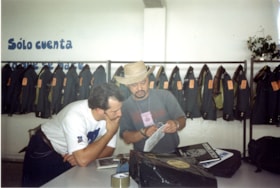
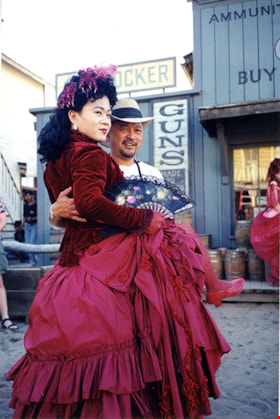
![Children dressed up for Halloween, [1999] thumbnail](/media/hpo/_Data/_Archives_Images/_Unrestricted/535/535-3386.jpg?width=280)
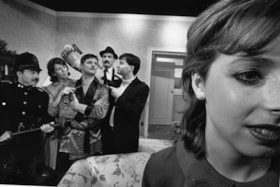
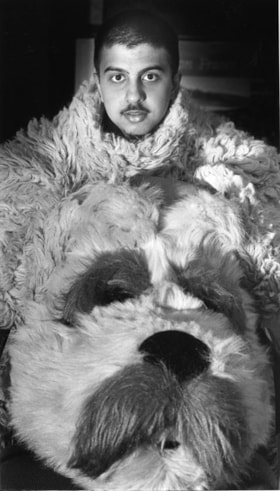
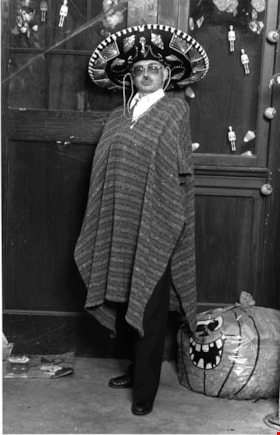
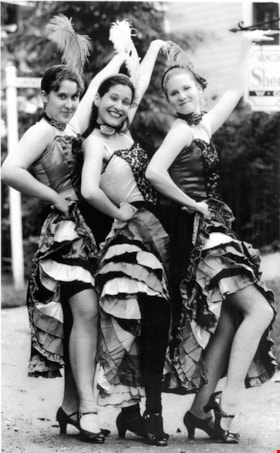
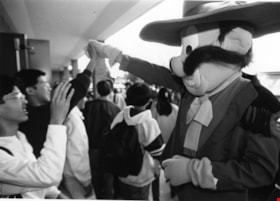
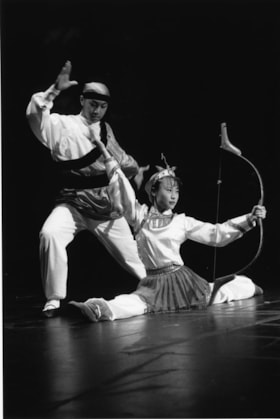
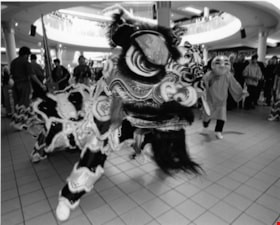
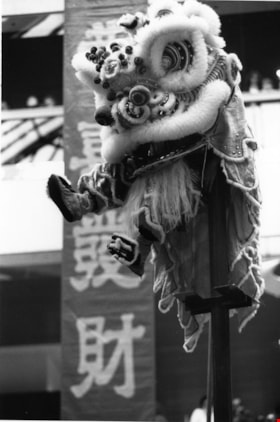
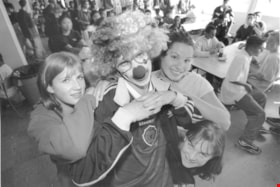
![Costumes, [between 1995 and 1998] thumbnail](/media/hpo/_Data/_Archives_Images/_Unrestricted/535/535-1462.jpg?width=280)
